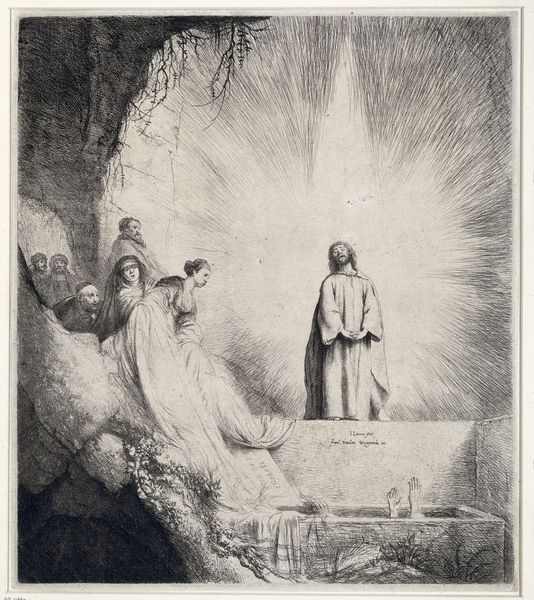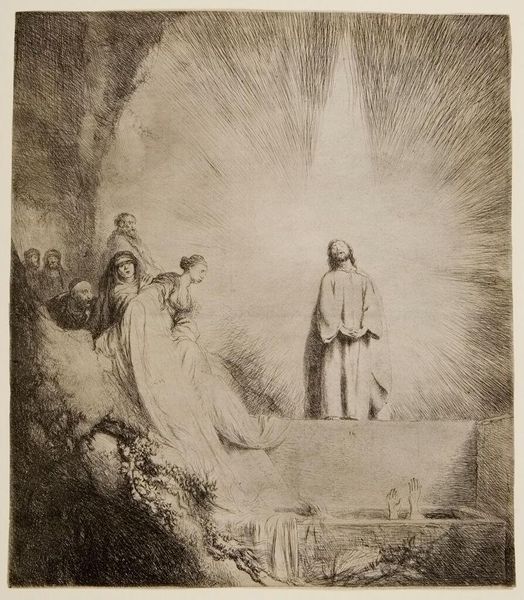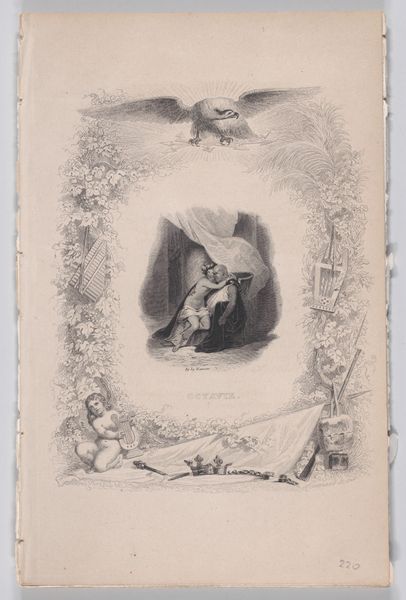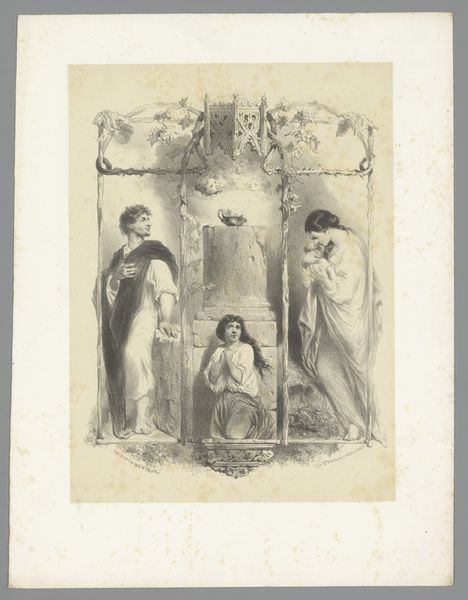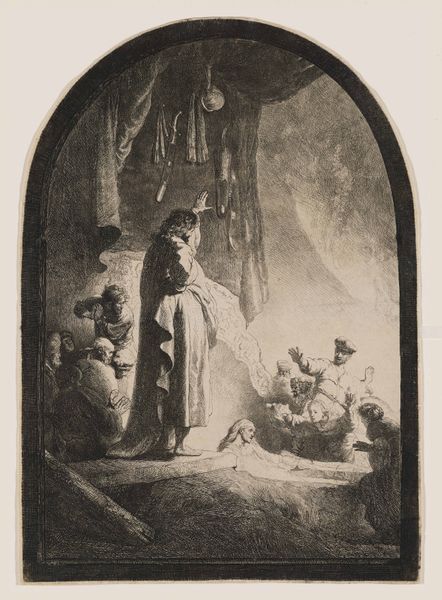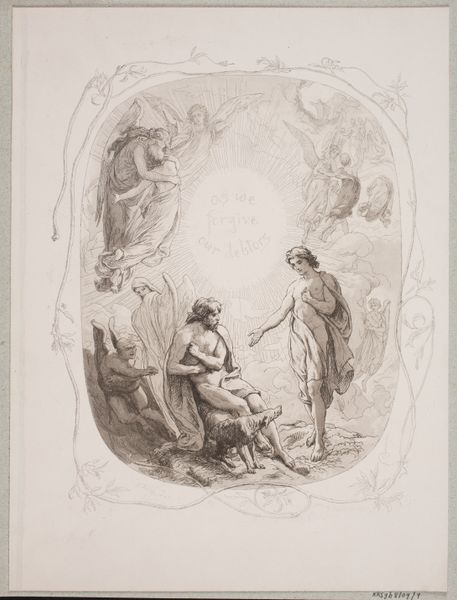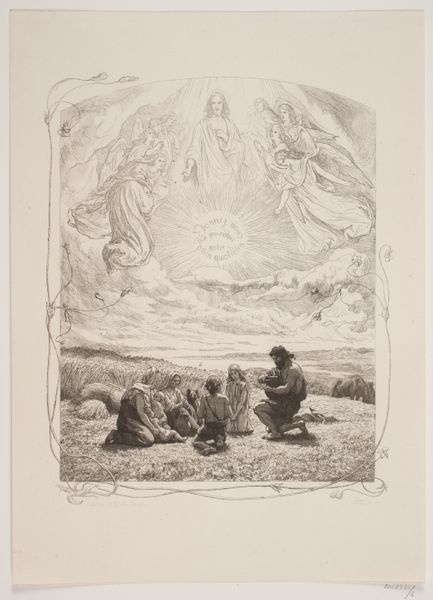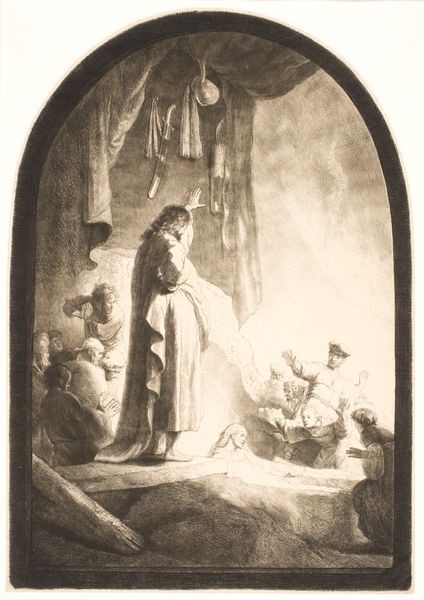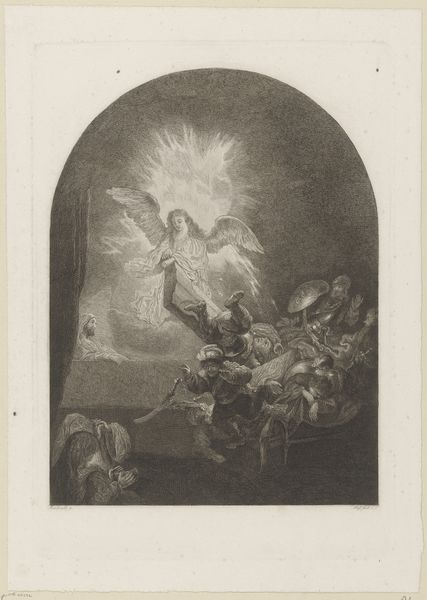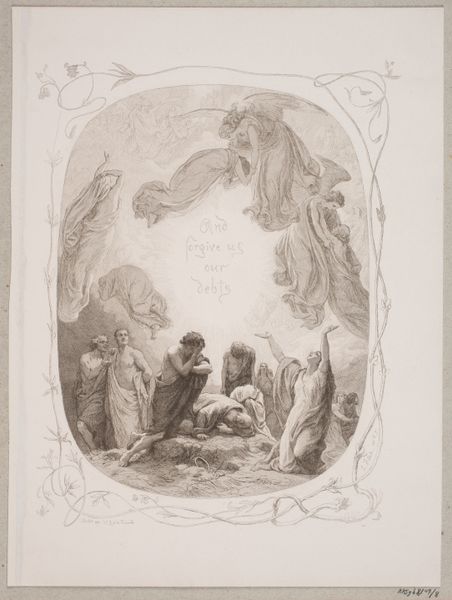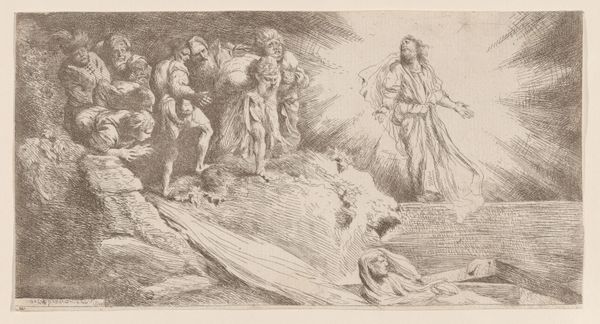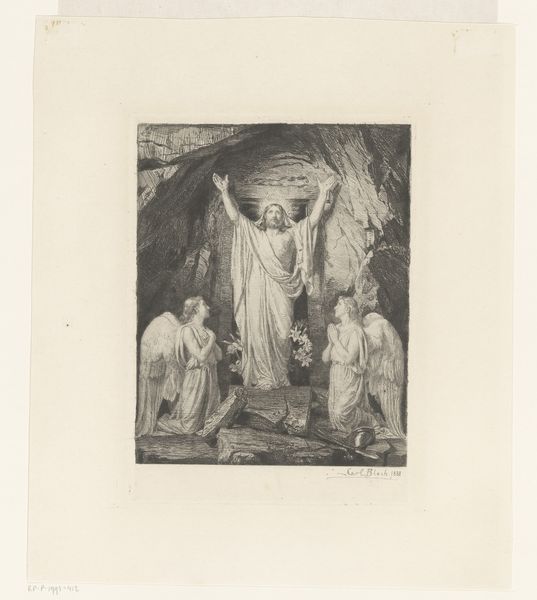
drawing, print, pencil, engraving
#
drawing
#
baroque
# print
#
figuration
#
pencil drawing
#
coloured pencil
#
pencil
#
history-painting
#
engraving
Dimensions: Sheet: 13 9/16 × 11 15/16 in. (34.5 × 30.3 cm)
Copyright: Public Domain
Jan Lievens created this print, "The Resurrection of Lazarus," using etching, a process of biting lines into a metal plate with acid, then inking and printing it. The etcher's art lies in the control of this chemical action, creating a range of tones and textures. Look closely, and you'll see how Lievens used a dense network of fine lines to build up the dramatic lighting effects. The stark contrast between the dark tomb and the radiant figure of Christ isn't just a visual trick; it's the result of hours of painstaking work. In the 17th century, printmaking was a vital means of disseminating images, making art accessible to a wider audience. While a painting might be a unique, precious object, a print could be reproduced and sold, bringing religious and historical scenes to middle-class homes. Consider the labor involved in creating this print, the skilled hands that guided the etching needle and operated the printing press. "The Resurrection of Lazarus" reminds us that art is not just about divine inspiration, but also about human ingenuity, skill, and the democratization of images.
Comments
No comments
Be the first to comment and join the conversation on the ultimate creative platform.
